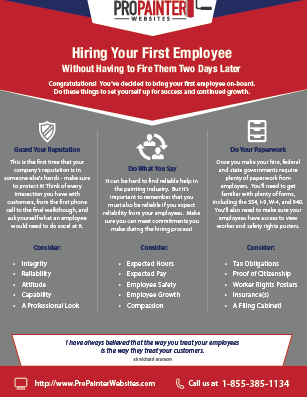Explore The Role Of Seasonal Consider The Success Of Commercial External Paint And Discover The Best Times To Secure Lasting Results For Your Task
Explore The Role Of Seasonal Consider The Success Of Commercial External Paint And Discover The Best Times To Secure Lasting Results For Your Task
Blog Article
Authored By- official site
When you're intending an industrial external painting task, seasonal variables can make or break your results. You'll want to take into consideration how temperature and moisture impact paint application and drying out times. Choosing the ideal period can guarantee your paint sticks correctly and lasts much longer. Yet which periods are truly the most effective for this kind of job? Allow's explore the key elements that can influence your project's success.
The Influence of Temperature Level on Paint Application
When you're intending a commercial exterior painting task, the temperature can significantly affect exactly how well the paint adheres and dries out.
Ideally, exterior house painting companies want to repaint when temperatures range in between 50 ° F and 85 ° F. If it's as well chilly, the paint may not treat correctly, leading to concerns like peeling or splitting.
On the other side, if it's as well hot, the paint can dry out too quickly, protecting against appropriate adhesion and leading to an unequal coating.
You should likewise think about the time of day; early morning or late afternoon uses cooler temperatures, which can be extra positive.
Always inspect the manufacturer's referrals for the specific paint you're making use of, as they frequently provide guidance on the perfect temperature variety for optimal results.
Humidity and Its Result on Drying Times
Temperature isn't the only ecological aspect that influences your industrial outside painting job; humidity plays a considerable function also. High humidity degrees can decrease drying times drastically, impacting the overall quality of your paint job.
When the air is saturated with moisture, the paint takes longer to heal, which can lead to issues like inadequate adhesion and a greater risk of mold development. If you're repainting on an especially damp day, be gotten ready for extended wait times between layers.
It's critical to keep an eye on local climate condition and plan appropriately. Preferably, go for moisture degrees in between 40% and 70% for ideal drying out.
Maintaining these consider mind guarantees your project stays on track and delivers a lasting surface.
Best Seasons for Commercial Exterior Painting Projects
What's the most effective season for your industrial exterior paint jobs?
Springtime and very early loss are commonly your best options. Throughout these periods, temperature levels are moderate, and humidity degrees are commonly reduced, creating ideal problems for paint application and drying.
Avoid summer's intense heat, which can trigger paint to completely dry too quickly, leading to poor attachment and finish. Similarly, wintertime's chilly temperature levels can prevent appropriate drying and curing, running the risk of the long life of your paint job.
Aim for days with temperature levels in between 50 ° F and 85 ° F for ideal results. Remember to inspect the local weather prediction for rainfall, as wet problems can ruin your project.
Preparation around these aspects ensures your painting task runs smoothly and lasts longer.
Final thought
In conclusion, planning your industrial exterior painting projects around seasonal considerations can make a considerable distinction in the result. By organizing job throughout the ideal temperature levels and moisture levels, you'll guarantee much better attachment and drying out times. Bear in mind to watch on neighborhood weather forecasts and select the correct time of year-- springtime and very early autumn are your best options. Taking these steps will certainly assist you achieve a resilient and professional coating that lasts.
